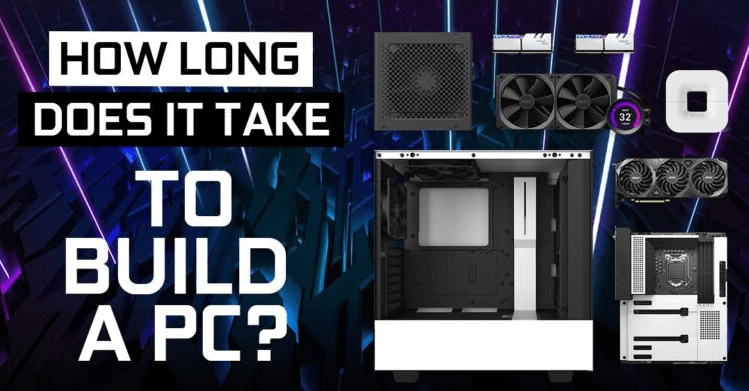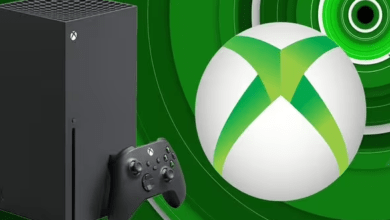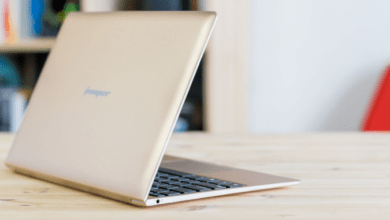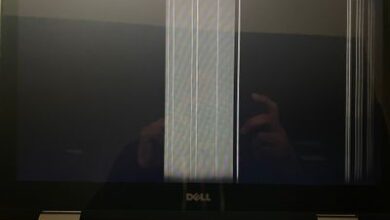How Long Does It Take To Build A PC? Best Info In 2024

Welcome to the exciting world of how long does it take to build a pc? Whether you’re a seasoned tech enthusiast or embarking on your very first DIY project, there’s something undeniably satisfying about assembling your own personal computer. Not only do you get to handpick every component and tailor it to your specific needs, but you also gain a deeper understanding of how this technological marvel comes together.
But here’s the burning question: How long does it actually take to build a PC? Well, my friend, that’s precisely what we’re going to delve into today. So grab your screwdriver and brace yourself for an informative journey as we explore the estimated timeframes, factors that affect the process, and some nifty tips for faster and easier PC building. Let’s dive in!
The Benefits Of Building Your Own PC
Building your own PC comes with a host of benefits that make it an enticing prospect for tech-savvy individuals. You have the freedom to choose each component according to your specific requirements and preferences. No more settling for pre-built systems with features you don’t need or sacrificing performance for aesthetics. With DIY PC building, every decision is in your hands!
Not only does building a PC give you complete control over the hardware selection, but it also allows for future upgradability. Technology evolves rapidly, and having the ability to swap out components easily means your system can stay relevant and powerful even as new advancements emerge.
Another advantage lies in cost-effectiveness. While it’s true that building a PC requires an upfront investment, it often proves more economical than purchasing pre-built options with similar specifications. By cutting out middleman markups and assembly costs, you can allocate more of your budget towards high-quality components that enhance overall performance.
Beyond financial savings, there’s a sense of pride and accomplishment that comes from successfully constructing your own computer. The satisfaction of powering on a system built by your own hands is unmatched! Plus, with knowledge gained during the process, troubleshooting becomes easier should any issues arise down the line.
Let’s not forget customization opportunities! Building your own PC opens up endless possibilities when it comes to personalizing its appearance through unique case designs or vibrant RGB lighting options – making it truly reflect your style and personality.
All these advantages combined make DIY PC building an exciting endeavor worth considering if you’re passionate about technology and crave total control over your computing experience. So why wait? How about we get everything rolling on this completely exhilarating excursion together!
What You Need to Build a PC?
Building your own PC can be an astonishing and remunerating experience. Not only do you have the freedom to choose the components that best fit your needs, but it is also a great way to save money compared to buying a pre-built system. But before you dive into the process, there are a few essential things you’ll need.
First and foremost, you’ll need a case to house all of your components. There are various sizes and styles available, so choose one that suits both your budget and aesthetic preferences. Additionally, ensure that the case has sufficient airflow for proper cooling. Next, you’ll need a motherboard – this is essentially the backbone of your PC. It connects all of the other components together and determines what features are supported. Ensure it’s viable with your picked processor.
Speaking of processors, don’t forget about choosing one! Consider factors like clock speed, number of cores/threads, and power consumption when making this decision. Memory or RAM is another crucial component. It affects how smoothly your system runs when multitasking or running memory-intensive applications. Opt for at least 8GB if you’re planning on using your PC for gaming or other demanding tasks.
A power supply unit (PSU) provides electricity to all of the components in your system. Ensure that it has enough wattage to support everything without straining itself too much. Storage options include hard disk drives (HDDs) and solid-state drives (SSDs). While HDDs offer more storage capacity at lower costs, SSDs provide faster boot times and data transfer speeds. Graphics cards are vital if you plan on gaming or working with graphic-intensive software such as video editing programs or 3D modeling software.
Choose one based on its performance capabilities within your budget range. Don’t forget about peripherals like monitors, keyboards, mice, speakers/headphones – these elements complete the overall experience! Remember: It’s crucial to do thorough research and ensure compatibility between components before making any purchases
Steps To Building A PC
Building your own PC may seem like a daunting task, but with the right guidance and patience, it can be a rewarding experience. Here are the steps you need to follow to successfully build your own PC.
1. Research and Planning: Before diving into the process of building a PC, it’s important to do some research. Determine what components you’ll need based on your budget and requirements. Make sure all the parts are compatible with each other.
2. Gather Your Components: Once you have done your research, start gathering all the necessary components for your build. This includes the motherboard, processor, RAM, storage devices, power supply unit (PSU), graphics card (GPU), and any additional peripherals.
3. Prepare Your Workspace: Find a clean and well-lit area where you can comfortably work on assembling your PC. Ensure that you have all the necessary tools such as screwdrivers and cable ties within reach.
4. Install CPU and Cooler: Begin by installing the CPU onto the motherboard following manufacturer instructions carefully. Then attach its cooler using thermal paste for optimal heat dissipation.
5. Install RAM Modules: Inserting RAM modules is relatively simple – just align them with their corresponding slots on the motherboard until they click into place securely.
6. Install Storage Devices : Connect your storage devices such as SSDs or HDDs to available SATA ports on your motherboard using appropriate cables provided with these drives.
7. Connect PSU Cables : Connect necessary cables from PSU – 24-pin ATX connector , CPU power connector , GPU power connectors .
8. Assemble Case Components : Carefully place Motherboard in case followed by attaching Graphics Card , connecting front panel connectors & fans
9. Cable Management : Neatly route cables through designated areas behind motherboard tray . Use zip ties or Velcro straps if needed .
10. Power On & Test : Finally connect monitor , keyboard & mouse . Power up system to ensure all components are functioning properly.
By following these steps, you can build your pc.
Estimated Time To Build A PC
When it comes to building your own PC, one of the questions that often comes up is how long it will take. While there isn’t a one-size-fits-all answer, as the time can vary depending on several factors, we can provide you with some general estimates.
On average, it takes about 2-3 hours to build a PC from start to finish. However, this timeframe can be shorter or longer depending on your level of experience and familiarity with the process. If you’re new to building PCs, it’s natural for it to take a bit longer as you navigate through each step carefully.
The complexity of the build also plays a role in determining the time needed. For example, if you’re opting for a basic setup with standard components, it may not take too long. On the other hand, if you’re going all out with high-end hardware and custom water cooling systems, expect more time investment.
Other factors that can affect the timeframe include whether or not you encounter any issues or complications during the process. Sometimes parts don’t fit properly or need extra attention which could prolong your building time. Additionally, preparation before starting is crucial in minimizing potential delays during assembly. Ensuring that all necessary components are readily available and organized beforehand helps streamline the process significantly.
Taking breaks when needed is important as well; rushing through without proper rest can lead to mistakes and frustration. Remember that building your own PC should also be an enjoyable experience! While there isn’t an exact answer regarding how long it takes to build a PC since many variables come into play; aiming for around 2-3 hours is reasonable for most individuals who have some prior knowledge or follow step-by-step guides closely!
Factors That Affect The Time frame
When it comes to building a PC, there are several factors that can affect the overall time frame. Understanding these factors will help you better estimate how long it will take for you to complete your build.
1. Experience and Skill Level: Your experience and skill level with building PCs plays a significant role in determining how long it will take you to build one. If you’re new to PC building, expect to spend more time as you learn the process and troubleshoot any issues that may arise along the way.
2. Complexity of Components: The complexity of the components you choose for your PC can also impact the timeframe. Certain components, such as liquid cooling systems or custom wiring setups, may require additional time and effort to install properly.
3. Research and Planning: Taking the time to research and plan your build beforehand can streamline the process significantly. By knowing exactly what components you need and understanding their compatibility, you can avoid potential delays during assembly.
4. Availability of Parts: Another factor that can affect your build’s timeframe is the availability of parts. If certain components are out of stock or on backorder, it may prolong your build as you wait for them to become available again.
5. Unexpected Issues: Despite careful planning, unexpected issues can still arise during a PC build. These could include compatibility problems between components or faulty parts that need replacement – both adding extra time until resolution.
6. Environment & Workspace Setup: Creating an optimal work environment by having all necessary tools readily accessible is crucial for efficiency in PC assembly – ensuring no wasted time hunting down misplaced screws or struggling with inadequate lighting conditions!
7. Time Constraints & Interruptions:A tight schedule or frequent interruptions while working on assembling your PC can slow down progress considerably. To mitigate this factor,set aside dedicated uninterrupted blocks of time specifically for building your computer
By considering these factors before embarking on your PC-building journey,you’ll have a clearer idea of how long it will take you to complete the process.
Tips For Faster And Easier PC Building
1. Plan Ahead: Before you start building your PC, take the time to carefully plan out each step. Make a list of all the components you need and ensure they are compatible with each other.
2. Organize Your Workspace: Clear your workspace of any clutter and gather all the necessary tools in one place. Having everything organized will help streamline the building process.
3. Read the Manuals: Take the time to read through the manuals provided with your components. Familiarize yourself with their installation instructions and any specific requirements they may have.
4. Use an Anti-Static Bracelet: To prevent static electricity from damaging sensitive components, wear an anti-static bracelet while handling them.
5. Install Components Outside of Case: It can be easier to install certain components, such as CPU, RAM, and GPU, outside of the case before placing them inside later on.
6. Cable Management: Proper cable management not only improves airflow but also makes future upgrades or maintenance easier. Take some extra time to neatly route cables behind motherboard trays or using cable ties.
7. Test Before Finalizing: Once all components are installed, perform a test boot before closing up your PC case completely. This ensures that everything is functioning properly before you start installing software or games.
Remember that every builder’s experience may vary when it comes to building a PC faster and easier due to individual skill levels and familiarity with the process.
Conclusion
Building your own PC can be a rewarding experience, allowing you to customize and optimize every aspect of your machine. While the exact time it takes to build a PC will vary depending on various factors, such as your level of experience and the complexity of the build, it is generally a project that can be completed in a few hours.
By following the steps outlined above and preparing all the necessary components and tools in advance, you can streamline the building process and reduce any potential delays. Remember to take your time during each step, double-checking connections and ensuring everything is properly installed.
With practice, building PCs will become faster and easier. So don’t be discouraged if you encounter challenges along the way – learning from them will only help you improve your skills. So why wait? Dive into this exciting DIY adventure today by researching what components are best suited for your needs, gather all necessary materials, roll up those sleeves, and start building! In no time at all, you’ll have a powerful custom-built PC that meets all of your requirements.
Enjoy the satisfaction of knowing exactly how long it took to build YOUR perfect PC!




